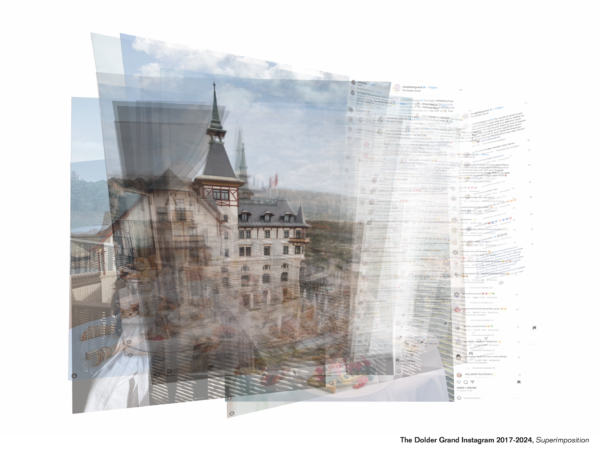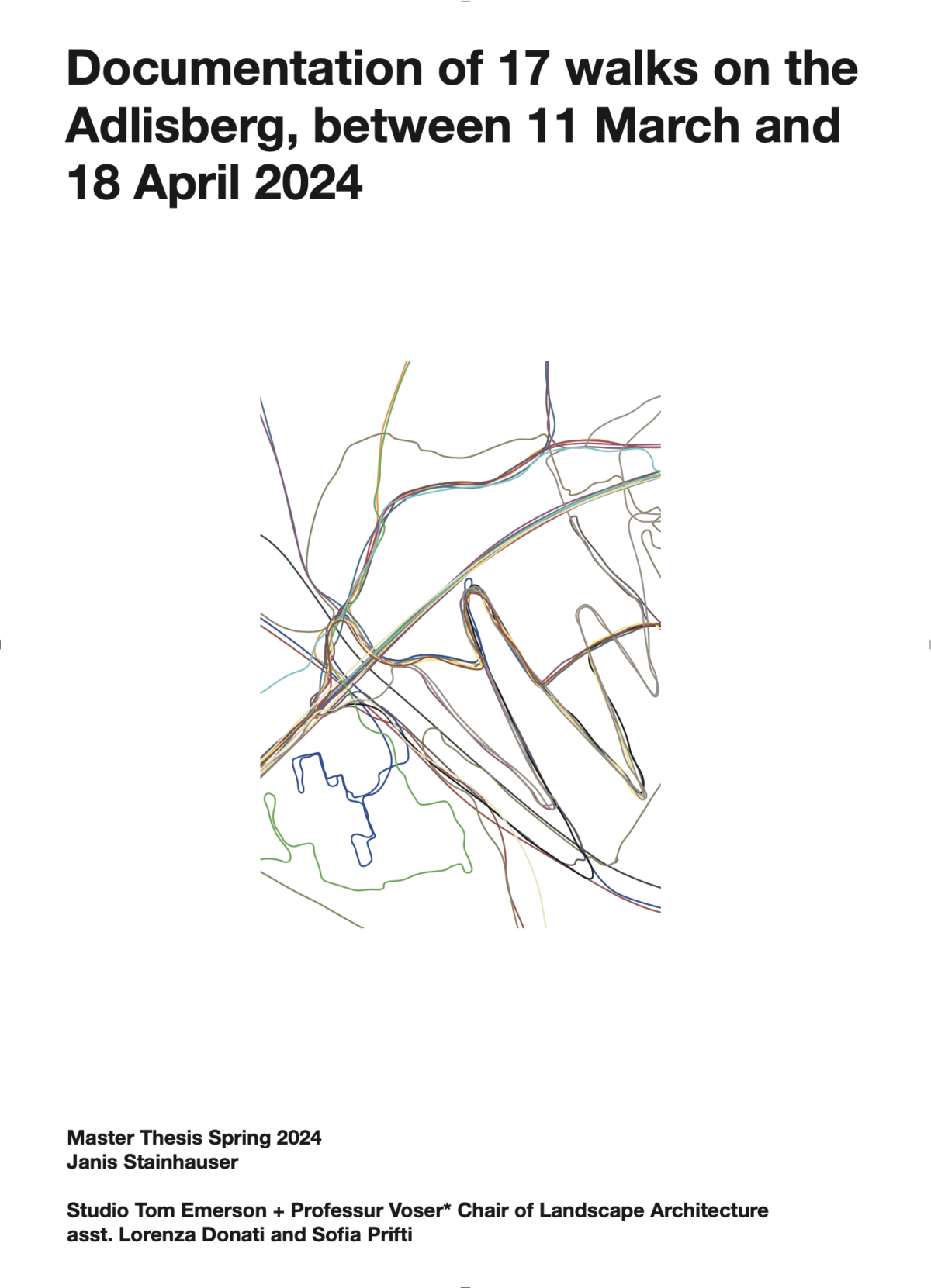«Die grosse Waldparzelle mit herrlichem Hochforst, wo man Hirsch und Reh belauschen kann, wie sie sachte hintreten an den Rand des dunklen Waldweihers, und von wo man wieder hinauswandert auf sonnbeglänzte Matten und obstreiche Halden, sie soll das Wallfahrtsziel werden von Vereinen, für Schulen und Gesellschaften» - Quote from the construction of the Dolder Waldpark, 1897.
In line with this objective, work on the park began in 1897. The Dolder Waldhaus, the Grand Hotel and the forest stood in close relationship to one another and manifested this relationship with the idea of the Waldpark. The Adlisberg was therefore seen as a recreational area that provided the picturesque setting for the Grand Hotel. In its development, the Waldpark meandered between pure representation and actual ecological space, negotiating the relationship between human and ecosystem.
For more than 100 years, the Adlisberg has been framed by a single image. In the past, it was the ever-same postcards of the Dolder Waldhaus that spread the image, today it is Instagram posts from the balconies of the extension to the Dolder Grand Hotel that put the historicist Heimatstil architecture centre stage.
The Master’s thesis attempts to look behind this image, to dissolve it and to generate a multi-layered reading of the place. Through a series of walks, traces of the site’s history were uncovered. The aim was to dig deeper and try to understand the place through its archaeology. Each time a discovery was made, a way of responding to it was sought. Sometimes by connecting, sometimes by planting, sometimes by building, sometimes by removing, and sometimes, and equally important, just by documenting.
Five interventions contribute to a new reading of the site. Five interventions in five places, showing five different ways of dealing with the ground in the past and five different temporalities.
The Path is about creating a new entrance to the Waldpark. It follows the original, only partially remaining path up the slope and restores its scenic qualities.
The Crossing is about reconnecting two areas of the forest that were separated when the Dolderbahn was extended in 1973. A new crossing, bridged by warning lights that signal the passage of the Dolderbahn every 7 minutes.
The Plateau is about something that could become. This man-made plain in the forest was first documented on a map in 1953 and has probably never been used. The planting of 18 winter linden trees on the plateau will create a space that will evolve over the next 1000 years.
The Pavilion is about creating a new meeting place on the foundations of the former pavilion. The Norway maple that has grown between the foundations becomes the new centrepiece of the structure.
The Threshold is about dissolving a materialised forest boundary and creating a forest edge that functions as a transit rather than a clear boundary. It serves as an additional ecological sphere for life in the forest and provides a different microclimate for visitors to the pool.
It is all about digging deeper and trying to understand a place through its archaeology. It is about looking behind the representation of the Adlisberg and the constructed Swiss landscape in general. It is about construction that grows out of the stories and histories of its environment.


























